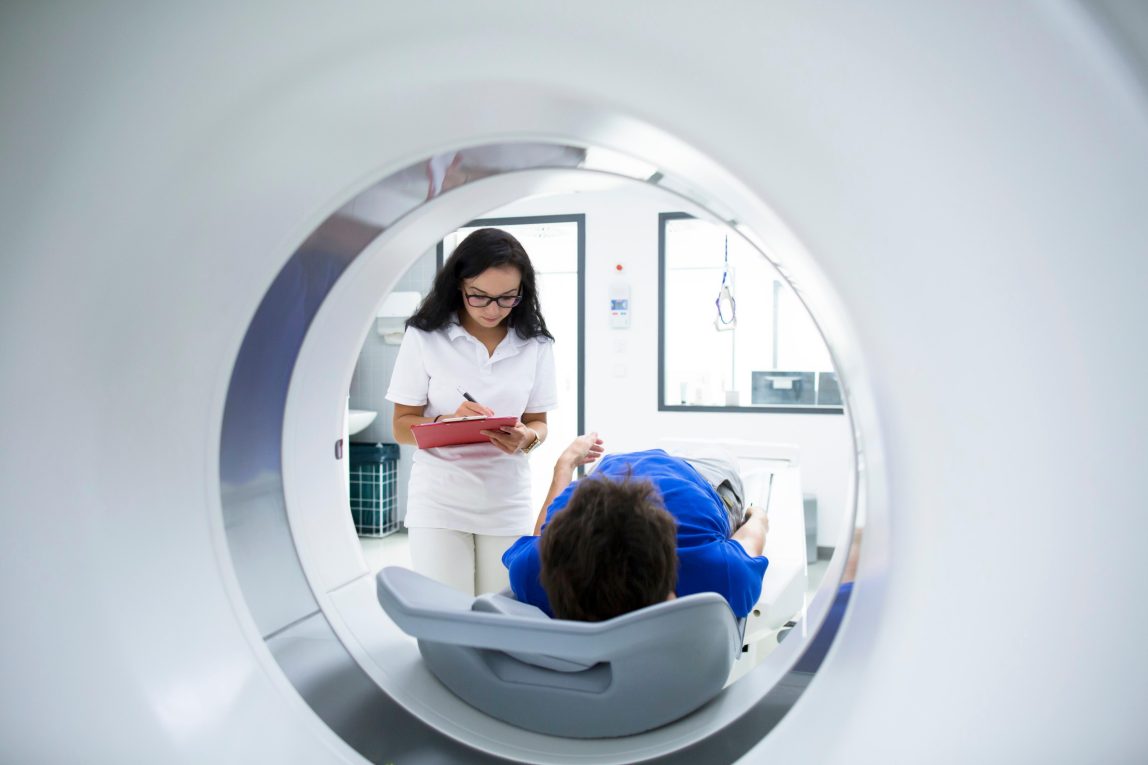Proton therapy is a type of radiation therapy that has emerged as an important treatment option in the field of oncology.
1. Principles of proton therapy:
- Proton therapy utilizes protons, which are positively charged particles, to deliver radiation to the tumour site.
- Protons have a unique physical property called the Bragg peak, which allows for the deposition of a high dose of radiation within the tumour while minimizing the radiation exposure to surrounding healthy tissues.
2. Advantages over conventional radiotherapy:
- Improved target precision: Proton therapy allows for more precise targeting of the tumour, reducing the radiation exposure to healthy tissues.
- Reduced radiation-induced toxicity: By minimizing the radiation dose to surrounding organs, proton therapy can significantly reduce the risk of long-term side effects, such as radiation-induced organ damage, secondary cancers, and developmental issues in pediatric patients.
- Enhanced treatment outcomes: The improved targeting and reduced toxicity can lead to better tumour control and improved overall outcomes for certain types of cancer.
3. Indications for proton therapy:
- Proton therapy is particularly beneficial for the treatment of solid tumours located near critical structures, such as the brain, spinal cord, heart, and lungs.
- Common indications include:
- Central nervous system (CNS) tumours (e.g., brain tumours, spinal cord tumours)
- Head and neck cancers
- Pediatric cancers (e.g., medulloblastoma, rhabdomyosarcoma, neuroblastoma)
- Certain types of lung cancer
- Liver and gastrointestinal cancers
- Prostate cancer
- Breast cancer (in selected cases)
4. Ongoing research and challenges:
- Ongoing research is exploring the use of proton therapy in a wider range of cancer types and treatment settings, including combination with other modalities such as immunotherapy.
- Challenges include the higher cost of proton therapy compared to conventional radiotherapy, the limited availability of proton therapy centers, and the need for further evidence to support its superiority over other radiation therapy techniques in specific clinical scenarios.
Overall, proton therapy is a valuable addition to the armamentarium of cancer treatment options, particularly for patients with tumours located near critical structures or those who may benefit from the reduced risk of radiation-induced toxicity. As the technology continues to evolve and more evidence is generated, the role of proton therapy in oncology is expected to expand further.
Proton therapy has been explored for the treatment of various malignancies, and its role has been particularly significant in certain types of cancers. Here’s a more detailed overview of the role of proton therapy in different malignancies:
1. Central Nervous System (CNS) Tumors:
- Proton therapy is widely used for the treatment of brain tumours, including gliomas, medulloblastomas, ependymomas, and craniopharyngiomas.
- The superior dose conformity and reduced radiation exposure to healthy brain tissue make proton therapy a preferred option, especially for pediatric patients, to minimize the risk of long-term neurocognitive and developmental effects.
2. Head and Neck Cancers:
- Proton therapy is valuable in the treatment of head and neck cancers, such as nasopharyngeal, oropharyngeal, and sinonasal tumours.
- By precisely targeting the tumour while sparing critical structures like the salivary glands, spinal cord, and brainstem, proton therapy can reduce the incidence of severe toxicities, including xerostomia, dysphagia, and neurological complications.
3. Pediatric Cancers:
- Proton therapy has become an essential treatment modality for pediatric malignancies, including medulloblastoma, rhabdomyosarcoma, neuroblastoma, and other solid tumours.
- The ability to minimize radiation exposure to growing and developing tissues makes proton therapy particularly advantageous in pediatric patients to reduce the risk of long-term side effects, such as growth impairment, cognitive deficits, and secondary cancers.
4. Lung Cancer:
- Proton therapy has shown promise in the treatment of lung cancer, particularly in reducing radiation exposure to the heart and other thoracic organs.
- This can be beneficial for patients with centrally located tumours or those with pre-existing cardiovascular conditions, as it may lead to a lower incidence of radiation-induced cardiac toxicity.
5. Liver and Gastrointestinal Cancers:
- Proton therapy has been explored for the treatment of liver, pancreatic, and other gastrointestinal cancers.
- The ability to precisely target the tumour while sparing the surrounding normal liver, bowel, and other critical structures can be advantageous, especially for patients with large or centrally located tumours.
6. Prostate Cancer:
- Proton therapy has been investigated as a treatment option for localized prostate cancer, with the potential to reduce the risk of radiation-induced toxicities, such as rectal bleeding and urinary incontinence, compared to conventional radiotherapy.
7. Breast Cancer:
- In selected cases, proton therapy may be considered for breast cancer patients, particularly those with left-sided tumours, to minimize the radiation exposure to the heart and lungs.
Ongoing research and clinical trials are continuously exploring the role of proton therapy in other malignancies, and as the technology and clinical evidence evolve, the indications for proton therapy may further expand in the future.

